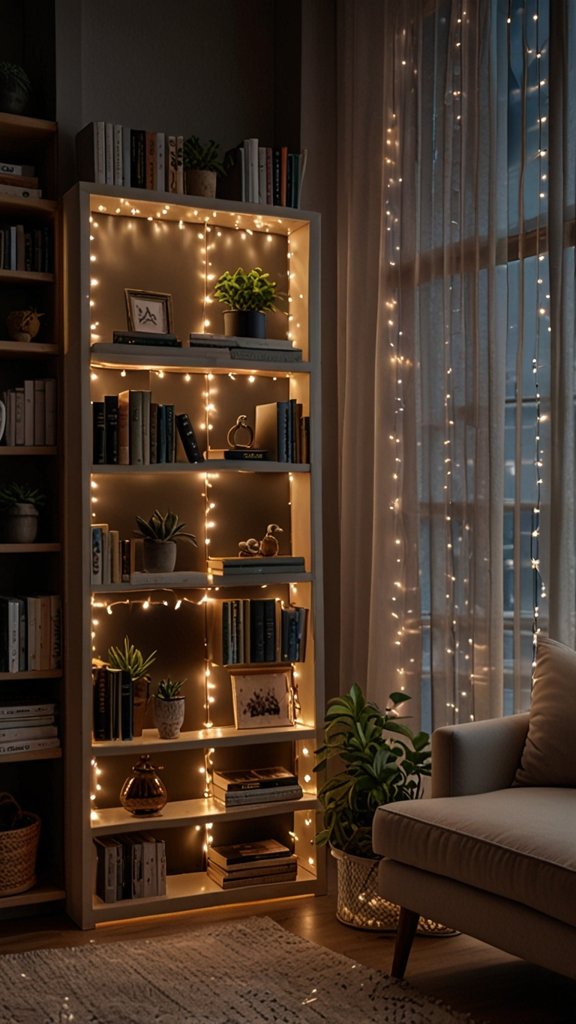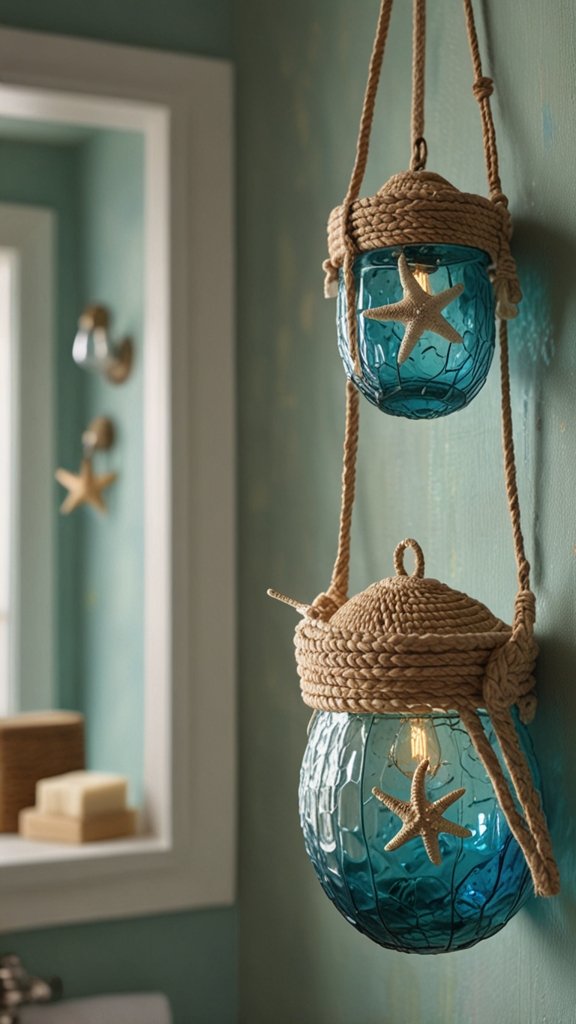
Are you looking to add some sparkle to your outdoor space? But don’t know which to choose between solar and traditional string lights, You’re in the right place! We’re diving in and comparing solar vs traditional string lights.
By the end of this article, you’ll be an expert on both, ready to make the best choice for your garden, patio, or next outdoor event.
Quick FAQs
Before we dive deeper, let’s address some common questions:
- Q: Are solar string lights as bright as traditional ones?
A: Generally, traditional string lights can be brighter, but modern solar lights are catching up in terms of brightness. - Q: Do solar string lights work in winter?
A: Yes, but they may have shorter operating hours due to less sunlight. - Q: Are traditional string lights more reliable?
A: They can be more consistent as they don’t rely on weather conditions for power. - Q: Which option is more eco-friendly?
A: Solar string lights are more environmentally friendly as they use renewable energy. - Q: Can I use solar string lights for indoor decorations?
A: It’s possible, but they’re best suited for outdoor use where they can receive direct sunlight.
Now, let’s shed some light on the details!

What Are Solar String Lights?
Solar string lights are a modern, eco-friendly lighting solution that’s gaining popularity in outdoor decoration. But how do they work? Let’s break it down.
Solar string lights consist of three main components:
- Solar panels
- LED bulbs
- Rechargeable batteries
The solar panels, usually located on top of the light string, harness energy from the sun during the day. This energy is then stored in the rechargeable batteries. When night falls, the stored energy powers the LED or Incandescent bulbs, creating a beautiful, twinkling display.
One of the biggest advantages of solar-powered outdoor decor is its energy independence. You don’t need to worry about finding an outdoor power outlet or running extension cords. This wireless lighting solution offers incredible flexibility in terms of placement. Want to light up that far corner of your garden? No problem!
Moreover, solar string lights are a prime example of sustainable outdoor lighting. They rely entirely on renewable energy, making them an excellent choice for environmentally conscious homeowners.

Traditional String Lights: The Classic Choice
Traditional string lights, on the other hand, have been illuminating our outdoor spaces for decades. These electric-powered light strings are the go-to choice for many due to their reliability and versatility.
Traditional string lights typically use one of two types of bulbs:
- Incandescent bulbs
- LED bulbs
Incandescent bulbs are the classic option. They produce a warm, soft glow that many people associate with cozy outdoor gatherings. However, they’re not as energy-efficient as their LED counterparts and tend to have a shorter lifespan.
LED bulbs in traditional string lights offer the best of both worlds. They provide bright, clear light while consuming less energy than incandescent bulbs. They also last much longer, reducing the need for frequent replacements.
The main power source for traditional string lights is, of course, electricity. This means you’ll need access to an outdoor power outlet or an extension cord. While this might limit placement options compared to solar lights, it also ensures a consistent power supply regardless of weather conditions.

Illuminating the Pros of Solar String Lights
Now that we understand the basics, let’s explore why solar string lights are becoming a popular choice for outdoor illumination.
Energy Efficiency and Eco-Friendliness:
- Solar string lights are a shining example of energy-efficient garden illumination. They harness free energy from the sun, reducing your carbon footprint and helping you create a more sustainable garden design.
Cost Savings:
While the initial cost might be higher which is not, solar-powered outdoor decor can lead to significant savings on your electricity bills in the long run. Once installed, they operate at zero energy cost!
Flexibility in Placement:
One of the biggest advantages of solar lights is their wireless nature. You can place them anywhere that receives sunlight during the day, even in areas far from power outlets. This makes them ideal for lighting up remote corners of your garden or for use in outdoor events where power access might be limited.
Low Maintenance:
Solar string lights are generally low-maintenance garden decor. The LED bulbs used in most solar lights have a long lifespan, often lasting for years before needing replacement. Plus, with no complex wiring, there’s less that can go wrong.
Safety:
Without the need for electrical cords, solar string lights reduce tripping hazards and eliminate the risk of electrical shorts in wet conditions. This makes them a safer option for year-round outdoor lighting.

Shedding Light on Solar String Lights’ Drawbacks
While solar string lights have many bright spots, they’re not without their shadows. Let’s look at some potential drawbacks:
- Initial Cost: The upfront cost of solar string lights is often higher than traditional options. However, it’s important to consider the long-term savings on energy bills.
- Weather Dependence: Solar light charging time depends on weather conditions. On cloudy days or during winter months with shorter daylight hours, your lights might not receive enough charge to last through the night.
- Brightness Limitations: While solar light brightness levels have improved significantly, they may not match the intensity of traditional electric lights, especially older models.
- Color Options: Due to energy efficiency requirements, solar string lights often have more limited color options compared to traditional lights.
- Battery Life: The rechargeable batteries in solar lights have a finite lifespan. After a few years, you might notice reduced performance and may need to replace the batteries. for more tips check out my blog post on How to Extend the Battery Life of Your Solar String Lights
Brightening Up: Advantages of Traditional String Lights
Traditional string lights continue to be a popular choice for many reasons. Let’s illuminate their strengths:
- Reliable Power Source: Traditional lights offer consistent and reliable lighting, regardless of weather conditions. You don’t have to worry about cloudy days affecting their performance.
- Brightness and Variety: Traditional string lights often provide brighter illumination and come in a wider variety of bulb types, colors, and effects. This makes them versatile for creating different moods and atmospheres.
- Immediate Use: Unlike solar lights that need charging time, traditional lights are ready to use as soon as you plug them in. This makes them great for last-minute decorating or unexpected gatherings.
- Longer Operating Hours: As long as you have a power source, traditional lights can stay on for as long as you need them, making them ideal for all-night events or all-season decorations.
- Consistent Performance: Traditional lights perform the same way year-round, regardless of the season or weather conditions.
The Dark Side: Cons of Traditional String Lights
While traditional string lights have their bright spots, they also come with some drawbacks:
- Higher Electricity Costs: Over time, the cost of powering traditional string lights can add up, especially if you use them frequently or for extended periods.
- Installation Limitations: Traditional lights need to be near a power source, which can limit where you can place them in your outdoor space.
- Safety Concerns: Outdoor use of electrical cords can pose safety hazards, especially in wet conditions. You’ll need to ensure all connections are properly protected from the elements.
- Maintenance: Depending on the type of bulbs used, traditional string lights might require more frequent bulb replacements, particularly if you’re using incandescent bulbs.
- Environmental Impact: Unless you’re using renewable energy to power your home, traditional string lights consume electricity from the grid, which often relies on non-renewable sources.

Solar vs Traditional String Lights: A Side-by-Side Comparison
To help you make an informed decision, let’s compare solar and traditional string lights across several key factors:
Energy Efficiency:
- Solar: High efficiency, uses renewable energy
- Traditional: Lower efficiency, especially with incandescent bulbs
Cost Analysis:
- Solar: Higher may have upfront cost, lower long-term cost
- Traditional: Lower upfront cost, higher long-term cost due to electricity usage
Environmental Impact:
- Solar: Low impact, uses clean energy
- Traditional: Higher impact, unless powered by renewable home energy
Durability and Weather Resistance:
- Solar: Generally weatherproof, designed for outdoor use
- Traditional: Varies, need to check specifications for outdoor rating
Aesthetic Options:
- Solar: Improving, but still somewhat limited in colors and effects
- Traditional: Wide variety of options available
Reliability:
- Solar: Depends on weather and charging conditions
- Traditional: Consistent as long as power is available
Flexibility:
- Solar: Can be placed anywhere with sufficient sunlight
- Traditional: Limited by proximity to power outlets

Choosing the Right Option for Your Outdoor Space
When deciding between solar and traditional string lights, consider the following factors:
- Lighting Needs: Assess how much light you need and for how long. If you need bright, all-night lighting, traditional might be better. For ambient, energy-efficient lighting, solar could be ideal.
- Climate: Your local climate plays a big role, especially for solar lights. If you live in a sunny area, solar lights will perform better. In cloudy or northern climates, traditional lights might be more reliable.
- Budget: Consider both short-term and long-term costs. While solar lights have a higher upfront cost, they can save money over time.
- Installation: Think about where you want to place your lights. If you have limited access to outdoor power outlets, solar lights offer more flexibility.
- Environmental Concerns: If reducing your carbon footprint is important to you, solar lights are the more eco-friendly option.
- Maintenance: Consider how much time you’re willing to spend on maintenance. Solar lights generally require less ongoing maintenance.
Creative Ways to Use Solar and Traditional String Lights
Whether you choose solar or traditional, string lights offer endless possibilities for creative outdoor lighting. Here are some ideas to inspire you:
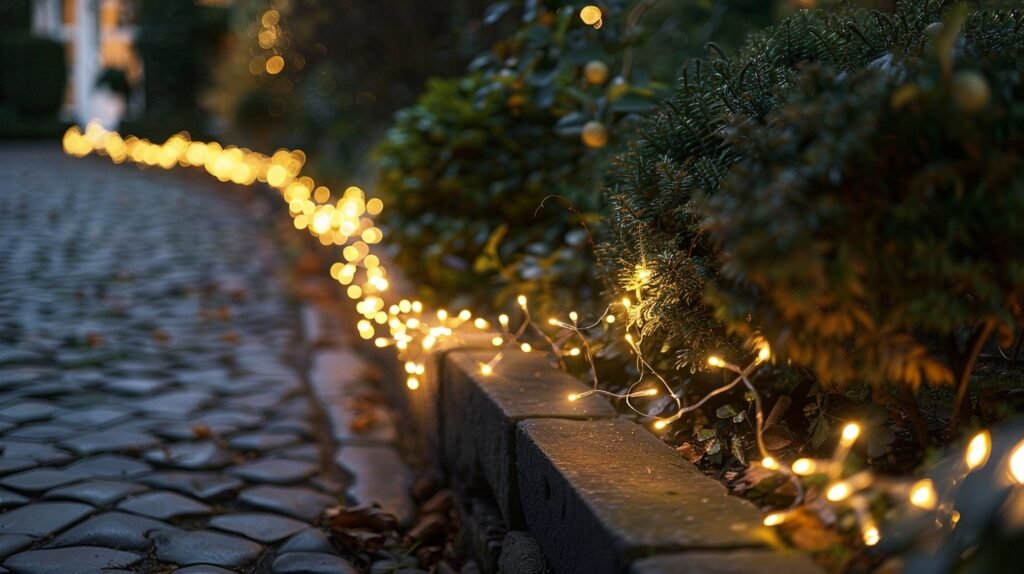
Garden Pathways: Line your garden paths with string lights for a magical nighttime stroll.
Tree Wrapping: Wrap lights around tree trunks and branches for a enchanting forest feel. More guides on my post on how to hang solar string lights
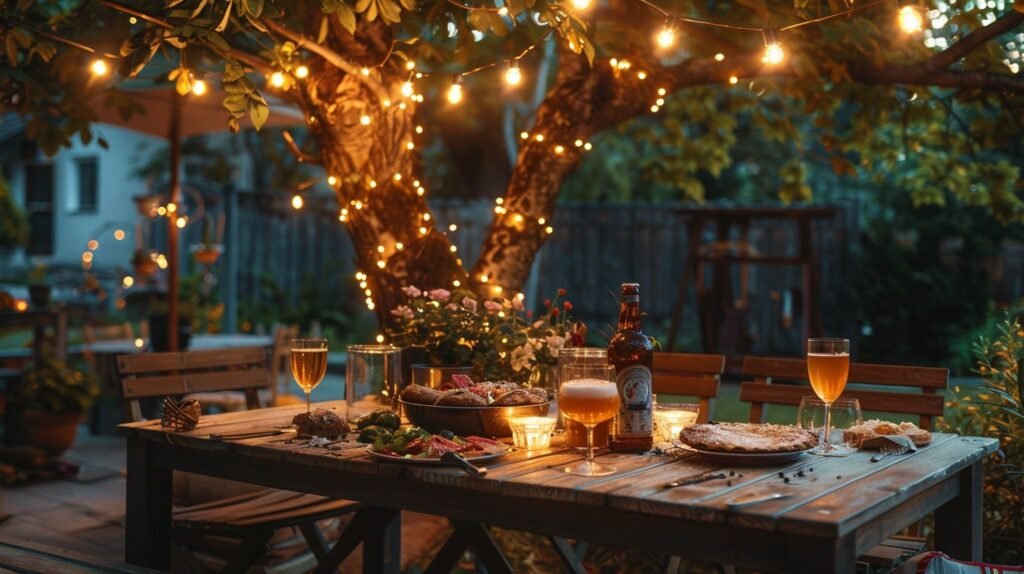
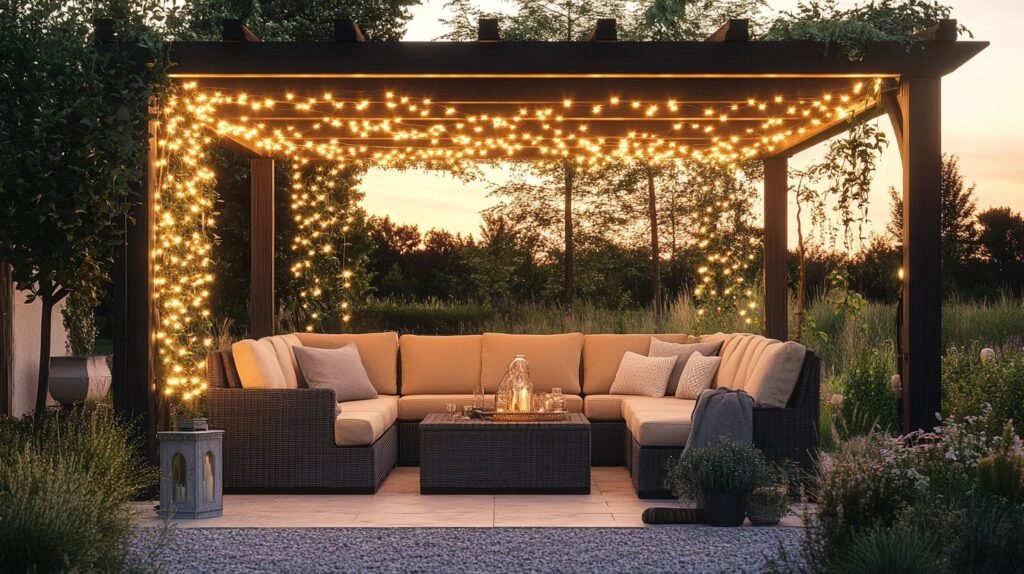
Pergola or Gazebo Lighting: Drape lights across the top of pergolas or gazebos to create a cozy outdoor living space.
Fence Decoration: Run lights along fences to define your property boundaries in style.
Outdoor Dining Ambiance: Hang lights above your patio dining area for romantic dinners under the stars.
Holiday Decorations: Use colorful string lights to celebrate holidays throughout the year.
Water Feature Highlight: Place lights around water features to create stunning nighttime reflections.
Balcony Beautification: String lights along balcony railings for a cozy urban oasis.
Outdoor Art: Create light sculptures or shapes for unique garden art.
Event Lighting: Use a combination of solar and traditional lights to illuminate outdoor events like weddings or parties.
Conclusion
As we’ve illuminated the pros and cons of solar vs traditional string lights, it’s clear that both options have their bright spots! Your perfect choice depends on your unique needs, environment, and style preferences.
Solar string lights shine when it comes to energy efficiency, eco-friendliness, and flexible placement. They’re a great choice if you’re looking for sustainable, low-maintenance outdoor lighting solutions. However, they may not be as bright or reliable in all weather conditions.
Traditional string lights, on the other hand, offer consistent brightness, a wide range of aesthetic options, and reliable performance regardless of weather. They’re ideal for those who need powerful, customizable lighting. However, they come with higher energy costs and some installation limitations.
Whether you’re leaning towards the eco-friendly glow of solar or the reliable shine of traditional lights, you’re now equipped to make a dazzling decision. So go ahead, light up your outdoor space and create that magical ambiance you’ve been dreaming of!
Remember, the best lighting solution might even be a combination of both types, allowing you to enjoy the benefits of each. Don’t be afraid to get creative and experiment with different lighting arrangements to find what works best for your unique outdoor space.
Now, it’s time to let your outdoor space shine! Thank you

